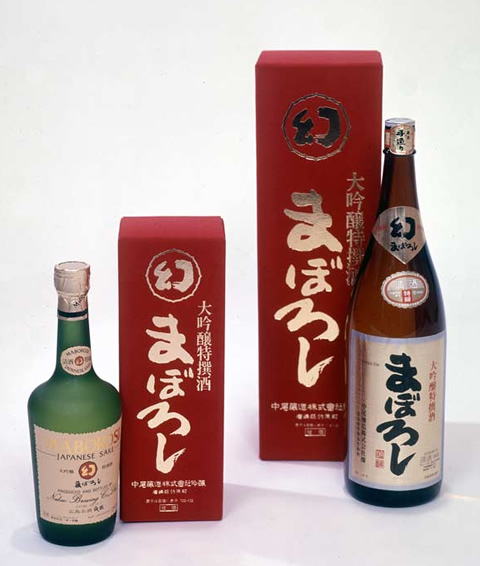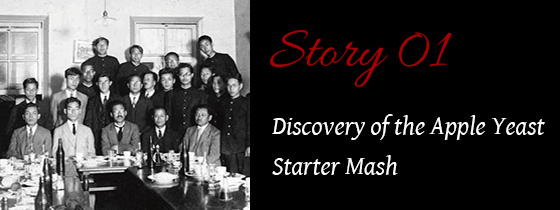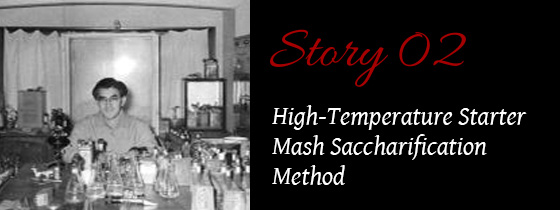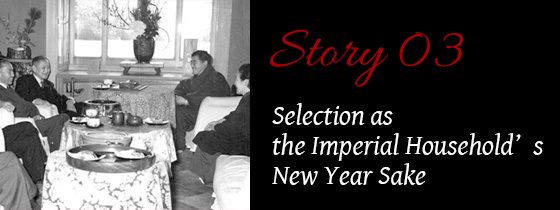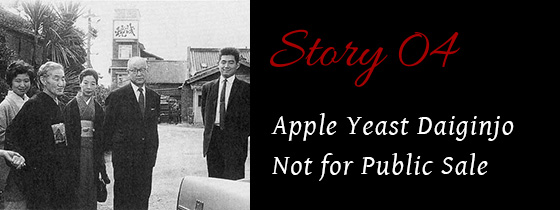Despite the emergence of this outstanding and highly fragrant daiginjo-shu produced with apple yeast, it was not available for purchase anywhere after its submission to the competition, mixed in the company of finest quality sakes. There were several reasons for this. At the time, the concept of ginjo-shu did not yet exist. Sakes submitted for appraisal at competitions were so costly to produce that the sale price would be exorbitant. The general feeling was that they would not sell, no matter how delicious they were. It was also felt that no one sought such high class sake. Ginjo-shu was merely produced for submission to competitions. Even if they were able to sell at a high price, the taxation system at the time made it virtually impossible for brewers to earn enough to even cover their costs.
The Story of Maboroshi Junmai Daiginjo

Apple Yeast Daiginjo
Not for Public Sale
Paving the Way to the General Market
It all changed when 5th generation brewery master Yoshitaka Nakao first tasted the ginjo-shu brewed with apple yeast. A non-sake-lover with a preference for western wines and spirits, Yoshitaka was astonished at the delicious flavor and declared, “Even I can drink this. We have to do something to get this sake on the market.”
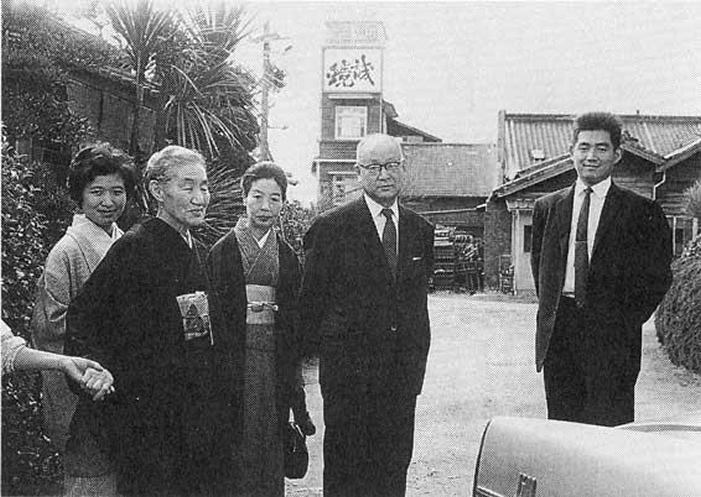
Finally in 1974, after overcoming a number of issues, and with complete disregard for making a profit, Junmai Daiginjo-shu Maboroshi brewed with the legendary apple yeast was sold on the market. Twenty-six years on from receiving first prize at the nationwide competition.
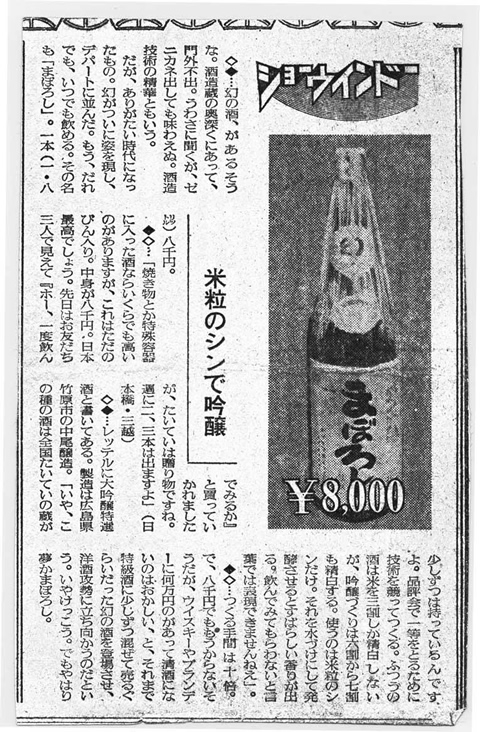
----------------------------------------
SHOW WINDOW.
Ginjo Using Just the Rice Grain’s Core
Apparently there exists a phantom sake. Deep inside the brewery; not allowed outside the brewery doors. Rumor has it that no amount of money can buy you a taste. This sake is said to represent the very essence of brewing skill.
But we are lucky to live in these times. The phantom sake has shown its face and is now available on department store shelves. Anybody, anywhere can now drink it. Its name? Maboroshi. Meaning “phantom”, it is a perfect match. One 1.8L bottle costs \8000.
● According to Mitsukoshi in Nihonbashi, “two to three bottles are sold each week, mostly as gifts, but just the other day, three friends were intrigued by the sake and said ‘let’s buy it just once and try it’. There are plenty of expensive sakes in ceramic or specialty vessels, but this is a simple glass bottle. So the content alone is worth \8000. It must be the best sake in Japan.”
● The label says specialty Daiginjo sake. It is produced by Nakao Brewery in Takehara City, Hiroshima, which commented, “Most breweries have small amounts of sake like this. They compete on skills to take the top prize in nationwide competitions. For regular sake, rice is polished about 30%, but ginjo sake uses rice polished 60-70%. Only the core of the rice grain is used. An incredible aroma is released when it is soaked in water and fermented. It is pretty difficult to explain if you haven’t tried it.”
● It takes 10 times the effort of regular sake to produce. And no profit can be made even at a price of \8000. There are several types of whiskey and brandy for tens of thousands of yen so it was odd that there was so equivalent refined sake on the market. Until now it has been mixed a little at a time in to finest quality sakes, but now the phantom has appeared, standing on its own, and it could pose quite a threat to sales of foreign liquors. That is fantastic. Either way, it’s still some kind of dream or phantom.
----------------------------------------
SHOW WINDOW.
Ginjo Using Just the Rice Grain’s Core
Apparently there exists a phantom sake. Deep inside the brewery; not allowed outside the brewery doors. Rumor has it that no amount of money can buy you a taste. This sake is said to represent the very essence of brewing skill.
But we are lucky to live in these times. The phantom sake has shown its face and is now available on department store shelves. Anybody, anywhere can now drink it. Its name? Maboroshi. Meaning “phantom”, it is a perfect match. One 1.8L bottle costs \8000.
● According to Mitsukoshi in Nihonbashi, “two to three bottles are sold each week, mostly as gifts, but just the other day, three friends were intrigued by the sake and said ‘let’s buy it just once and try it’. There are plenty of expensive sakes in ceramic or specialty vessels, but this is a simple glass bottle. So the content alone is worth \8000. It must be the best sake in Japan.”
● The label says specialty Daiginjo sake. It is produced by Nakao Brewery in Takehara City, Hiroshima, which commented, “Most breweries have small amounts of sake like this. They compete on skills to take the top prize in nationwide competitions. For regular sake, rice is polished about 30%, but ginjo sake uses rice polished 60-70%. Only the core of the rice grain is used. An incredible aroma is released when it is soaked in water and fermented. It is pretty difficult to explain if you haven’t tried it.”
● It takes 10 times the effort of regular sake to produce. And no profit can be made even at a price of \8000. There are several types of whiskey and brandy for tens of thousands of yen so it was odd that there was so equivalent refined sake on the market. Until now it has been mixed a little at a time in to finest quality sakes, but now the phantom has appeared, standing on its own, and it could pose quite a threat to sales of foreign liquors. That is fantastic. Either way, it’s still some kind of dream or phantom.
----------------------------------------
The first year, 100 of the 1800ml bottles were sold at an unprecedented price of 8,000yen per bottle. In those days, a regular 1800ml bottle of sake sold for 800yen. People all around said how foolish it was to try and sell sake for such a high price, but the bottles sold in no time. And the reason for that was simple: it was that much better than any sake that had ever come before it.
